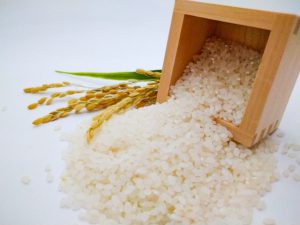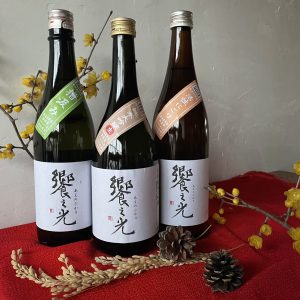13.02.2024
4Types & 3Benefits of sake!【PART2】
Thank you for taking the time to read the FB Management newsletter!
Continuing from the last time, we will introduce aroma, flavor and benefits about Japanese sake!
Sake has four types based on aroma and flavor.
- 1.Kunshu (薫酒)
・Exhibits a floral aroma and a fruity flavor reminiscent of flowers.
・Typically associated with the Ginjo-zukuri type of sake.
・Gaining popularity in recent years, it is often recommended to be enjoyed chilled, similar to the approach for wine. - 2.Jukushu (熟酒)
・Characterized by a long aging period, resulting in a smooth and mellow taste with spicy notes.
・Can be enjoyed at room temperature, slightly warmed, or even slightly chilled, providing a versatile drinking experience. - 3.Soshu (爽酒)
・Offers a refreshing and crisp taste, sometimes referred to as “karakuchi” or dry.
・Examples include Honjozo-shu.
・Best enjoyed chilled in a glass. - 4.unshu (醇酒)
・Features the inherent richness and sweetness of rice.
・Allows the natural umami and sweetness of the rice to shine through.
・Best enjoyed at room temperature to savor its robust flavor.



As you can see, there are different types of sake depending on the manufacturing process and flavor, so we hope you find your favorite sake!
Beauty effects and health benefits
Sake, made by fermenting rice and rice malt, is said to be rich in nutrients and has been associated with benefits for skin and overall health.
- Skin-whitening Effect
The kojic acid present in sake has the ability to inhibit the production of melanin, which is the substance responsible for moles and dark spots, making it effective for skin lightening. - Moisturizing Effect
It contains amino acids, which are also components that bring out the richness of Japanese sake. Amino acids have the function of providing moisture to the keratinocytes of the skin. - Promotion of Blood Circulation
The adenosine found in Japanese sake has the function of dilating blood vessels, improving blood circulation.
Due to its muscle-relaxing properties, it also has benefits for those experiencing shoulder stiffness or muscle tension.
You must try Japanese sake, which offers various beauty and health benefits as mentioned!
We’d like to introduce you to our recommended company, Musashi Winery.


Musashi Winery is located in Saitama Prefecture, in one of Japan’s leading organic cultivation areas blessed with abundant clear streams and healthy soil. This company produces both wine and Japanese sake. The artisans responsible for winemaking have experienced the unique brewing methods of Japanese sake, incorporating their expertise into the art of winemaking.

A highly recommended is the Xiang no Hikari Junmai Daiginjo 720ml!
This is a Junmai Daiginjo sake made using “Isehikari rice” cultivated by organic farmers in Ogawa Town, without the use of any pesticides or chemical fertilizers.
“Isehikari” is an extraordinary variety of rice discovered in the paddy fields of Ise Grand Shrine.
Despite two typhoons struck, causing other varieties rice to collapse, “Isehikari” stood upright in the center of the rice fields!
※Ise Grand Shrine is one of the central figures in Japan’s State Shinto.
Sake made from such resilient rice allows you to experience the rich sweetness inherent in the rice itself.
Why not give Musashi Winery’s sake a try?
You can check out Musashi Winery’s website here!
Thank you for staying with us until the end. This is the Global Team from FB Management. This time, we continued to introduce traditional Japanese sake, following up on last week’s discussion.
Moving forward, we will continue to showcase food and traditional crafts that allow you to experience the essence of Japan. If you’re interested, please feel free to visit our website and contact us!!
Email : inbound@fbmg.co.jp